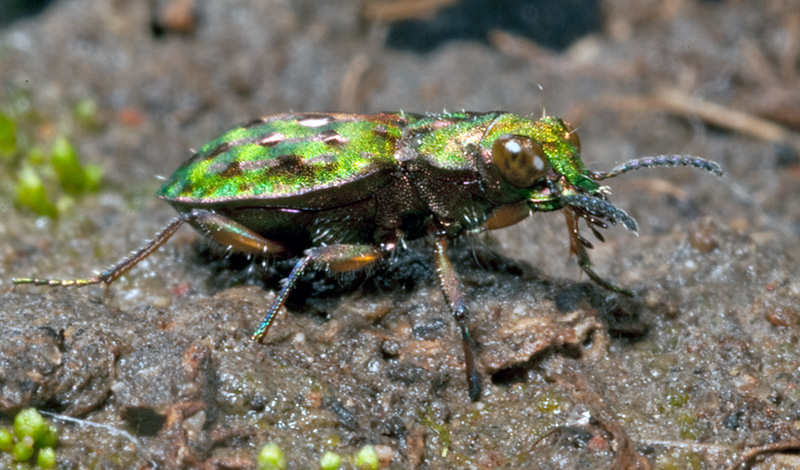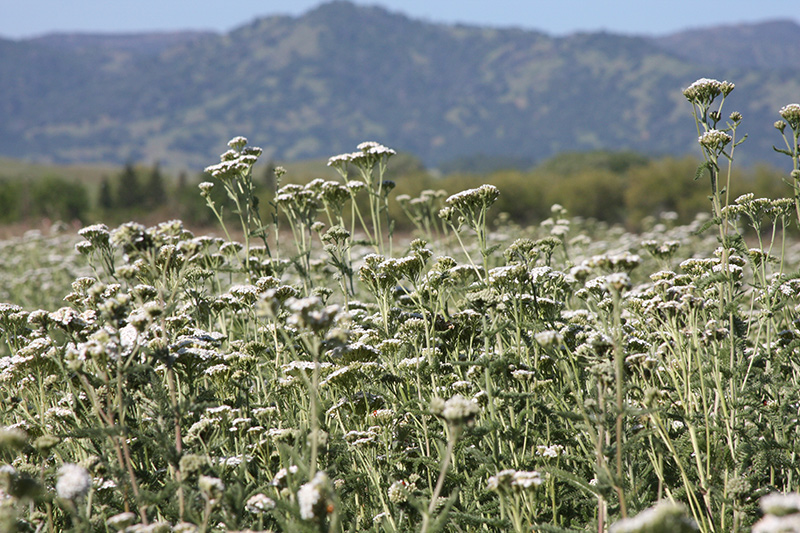Funding
Funding
Federal Funding Opportunities
State Funding Opportunities
Private Foundations
Federal Funding Opportunities
National Oceanic and Atmospheric Administration – Community-Based Restoration Program
The NOAA Community-based Restoration Program (CRP) provides funds for small-scale, locally driven habitat restoration projects that foster natural resource stewardship within communities. The program seeks to bring together diverse partners to implement habitat restoration projects to benefit living marine resources. Projects might include restoring salt marshes, mangroves, and other coastal habitats; improving fish passage and habitat quality for anadromous species; restoring and creating oyster reefs, removing exotic vegetation and replanting with native species; removing dams; and similar projects to restore habitat or improve habitat quality for populations of marine and anadromous fish. Partnerships are sought at the national and local level to contribute funding, land, technical assistance, workforce support, or other in-kind services.
Current Deadline for Applications: 2005 TBA
Estimated Total Funding: $ 3,000,000
Award Ceiling: $ 200,000
Requires Matching Funds or In-kind Services
Natural Resource Conservation Service – Grassland Preserve Program
The Grassland Reserve Program (GRP) is a voluntary program offering landowners the opportunity to protect, restore, and enhance grasslands on their property. Section 2401 of the Farm Security and Rural Investment Act of 2002 (Pub. L. 107-171) amended the Food Security Act of 1985 to authorize this program. The Natural Resources Conservation Service, Farm Service Agency and Forest Service are coordinating implementation of GRP, which helps landowners restore and protect grassland, rangeland, pastureland, shrubland and certain other lands and provides assistance for rehabilitating grasslands. The program will conserve vulnerable grasslands from conversion to cropland or other uses and conserve valuable grasslands by helping maintain viable ranching operations.
Current Deadline for Applications: See NRCS Web page
Estimated Total Funding: $ 254,000,000 through 2007
Award Ceiling: N/A-Minimum offer must be 40 contiguous acres
Match Required: Restoration costs are cost shared at up to 75 percent.
U.S. Fish and Wildlife Service – Cooperative Endangered Species Conservation Fund (Section 6)
Grants offered through the Cooperative Endangered Species Conservation Fund (authorized under section 6 of the Endangered Species Act fund participation in a wide array of voluntary conservation projects for candidate, proposed and listed species. These funds may in turn be awarded to private landowners and groups for conservation projects.
Current Deadline for Applications: Varies by Program
Estimated Total Funding: FY 2004 $ 82,000,000
Award Ceiling: $ 14,000,000
U.S. Fish and Wildlife Service – Partners for Fish and Wildlife Program
The Partners for Fish and Wildlife Program provides technical and financial assistance to private landowners for habitat restoration on their lands. A variety of habitats can be restored to benefit Federal trust species (for example, migratory birds and fish and threatened and endangered species.) Normally the cost share is 50 percent (the Service and the landowner each pay half of the project costs), but the percentage is flexible. Services or labor can qualify for cost-sharing.
Current Deadline for Applications: There is no specific deadline for this grant.
Estimated Total Funding: $ 16,800,000
Award Ceiling: $ 25,000
U.S. National Parks Service – Land and Water Conservation Program
The LWCF program, administered nationally by the National Park Service, provides funds to federal agencies, the 50 states and 6 territories. Funds for the program come from federal recreation fees, sales of federal surplus real property, the federal motorboat fuels tax and the Outer Continental Shelf mineral receipts. The money allocated to the states may be used for statewide planning, acquiring, and developing outdoor recreation areas and Facilities.
Under the provisions of the California Outdoor Recreation Resources Plan Act of 1967, (Public Resources Code §5099 et seq.), the expenditure of funds allocated to California is administered by the Director of the Department.
Current Deadline for Applications: May 2, 2005, for local agencies, August 1, for state agencies
Estimated Total Funding: $ 91,300,000
Award Ceiling: $ To facilitate geographic distribution of funds, local agency Applicants are advised not to apply for more than 5% of the annual local agency share of LWCF funds per Project. Annual program allocations will vary. For the annual local agency share allocation, access the web site at http://www.parks.ca.gov. Maximum amounts do not apply to State agencies.
Match Required: 50% match requirement. This is a reimbursement program. The applicant is expected to finance the entire project. Fifty percent of the project will be funded by the grant, less surcharge for administration.
Natural Resources Conservation Service – Wildlife Habitat Incentives Program
The Wildlife Habitat Incentives Program (WHIP) is a voluntary program for people who want to develop and improve wildlife habitat primarily on private land. Through WHIP USDA’s Natural Resources Conservation Service provides both technical assistance and up to 75 percent cost-share assistance to establish and improve fish and wildlife habitat. WHIP agreements between NRCS and the participant generally last from 5 to 10 years from the date the agreement is signed.
Current Deadline for Applications: Continuous sign-up process
Estimated Total Funding: $ 35,000,000
Award Ceiling: N/A
State Funding Opportunities
State of California Wildlife Conservation Board-Habitat Enhancement and Restoration (General)
Funds were made available to WCB for the enhancement and restoration of a variety of habitat types through the Habitat Conservation Fund, the General Fund, the Wildlife Restoration Fund through the Safe Neighborhood Parks, Clean Water, Clean Air, and Coastal Protection Bond Act of 2000. In addition to wetland and riparian habitat, funds are available for the enhancement and restoration of:
- Threatened and Endangered Species Habitats
- Forest Land Habitat
- Salton Sea Restoration Projects
Eligible enhancement and restoration projects must provide for the long-term maintenance of the restored and/or enhanced habitat. Eligible applicants for restoration projects include nonprofit conservation organizations and federal, state or local governmental agencies. Habitat enhancement and restoration projects, like the acquisition and public access projects, are carried out pursuant to recommendations from the DFG. Restoration and public access projects may be located on Department-owned or other lands.
State of California Wildlife Conservation Board-Inland Wetlands Conservation Program
The IWCP has a basis mission to create and implement conservation efforts that make economic as well as social and environmental sense. Working in conjunction with other CVHJV partners, the program has become very innovative at protecting and managing wetlands in the Central Valley.
To achieve their goals, the CVHJV developed the following six objectives:
- Protect 80,000 acres of existing wetlands through acquisitions of fee title or perpetual conservation easements.
- Secure an incremental, firm 402,450 acre-foot quality water supply for use by National Wildlife Refuges (NWR’s), State Wildlife Areas (WA’s) and the Grassland Resource Conservation District (GRCD).
- Secure Central Valley Project power for NWR’s, WA’s, GRCD, and other public and private land dedicated to wetland management.
- Increase wetland acres by 120,000 acres and protect these wetlands in perpetuity by acquisition of fee-title or conservation easements.
- Enhance wetland habitat on 291,000 acres of public and private lands.
- Enhance waterfowl habitat on 443,000 acres of agricultural lands.
To accomplish the CVHJV objectives and maximize the use of available resources, the WCB, through the IWCP, is authorized to award grants to nonprofit organizations, local governmental agencies, and state departments. In addition, the WCB is authorized to acquire, lease, rent, sell, or exchange any land or options acquired, with the proceeds going directly to the Inland Wetlands Conservation fund to further support the efforts of the IWCP and the CVHJV.
Current Deadline for Applications: There is no specific deadline for this grant.
Award Ceiling: N/A
Requires matching funding or in-kind services by Applicant
State of California Wildlife Conservation Board-Land Acquisition Program
The acquisition program is administered pursuant to the Board’s original enabling legislation, “The Wildlife Conservation Law of 1947” (Fish and Game Section 1300, et seq.) and land acquisition is a component of all WCB programs. The Wildlife Conservation Board (WCB) acquires real property or rights in real property on behalf of the Department of Fish and Game and can also grant funds to other governmental entities or nonprofit organizations to acquire real property or rights in real property. All acquisitions are made on a “willing seller” basis pursuant to a fair market value appraisal as approved by the Department of General Services (DGS). The acquisition activities are carried out in conjunction with the Department of Fish and Game (DFG), with the DFG recommending priorities for proposed acquisitions. Following the DFG site evaluations, recommendations are submitted to the WCB for consideration for funding.
State of California-Oak Woodlands Conservation Program
Prior to WCB awarding a grant for an oak woodland conservation easement, restoration or enhancement project or any public education or outreach project, Section 1366 of the Act requires that a city or county in which grant money would be spent shall prepare or demonstrate that it has already prepared an Oak Woodlands Management Plan. The Act requires the plan to include a description of all native oak species located within the county or city’s jurisdiction.
To participate in the Oak Woodlands Conservation Program, a county or city shall adopt an Oak Woodlands Management Plan in the form of a Resolution. The Resolution does not have to be part of the General Plan. If a county or city currently has a plan in place that meets the minimum requirements of the Oak Woodlands Management Plan, a resolution by the governing body certifying such compliance is sufficient.
State of California Wildlife Conservation Board-Rangeland Grazing Land and Grazing Protection Program
In September of 2002, Chapter 984, Statutes of 2002, enacted the Rangeland, Grazing Land and Grassland Protection Act of 2002. The Act designated the Wildlife Conservation Board (WCB) as the lead agency for carrying out the California Rangeland, Grazing Land and Grassland Protection Program. The purpose of the program is to protect California’s rangeland, grazing land and grasslands through the use of conservation easements.
Private Foundations
Packard Foundation– Conserving California’s Landscape Initiative
The program focuses on three regions of California, all recognized for their important biological resources and spectacular scenic value: the Central Coast, the Central Valley, and the Sierra Nevada. This initiative has two parts: a transactions component, which sets aside funds to purchase land as well as development and water rights in these regions to preserve sites of particular value; and a complementary grants component, which supports compatible efforts in planning, policy development, and capacity-building.
River Network-Watershed Assistance Grants
River Network teamed up with the U.S. Environmental Protection Agency to institute the Watershed Assistance Grants program, a key action under the Clean Water Action Plan. The purpose of the WAG program is to support the growth and sustainability of local watershed partnerships in the United States. For the purpose of this grant program, a “watershed partnership” includes interested and affected parties in the identified watershed.
The Great Valley Center-LEGACI Grants
Each year, The Great Valley Center awards well over $500,000 in grants to nonprofit groups, community organizations, and local governments that are working to improve the Central Valley through initiatives in the areas of land use, economic development, growth, agriculture, conservation and investment (LEGACI).
Seventeenth Annual Workshop
Habitat Conservation Planning from Tahoe to the Bay
October 16th, 2019, Ulatis Community Center, Vacaville


